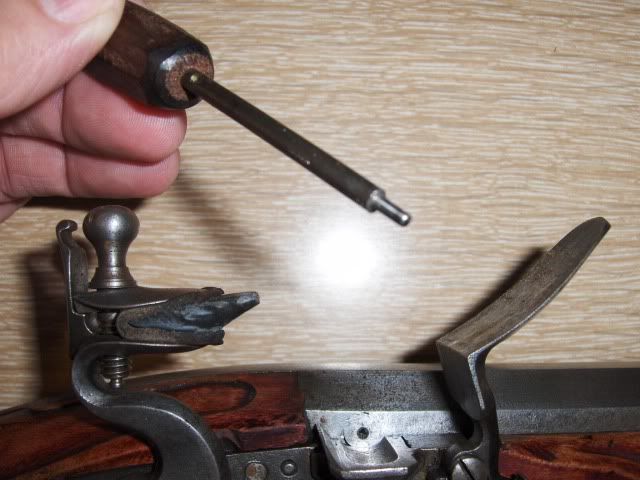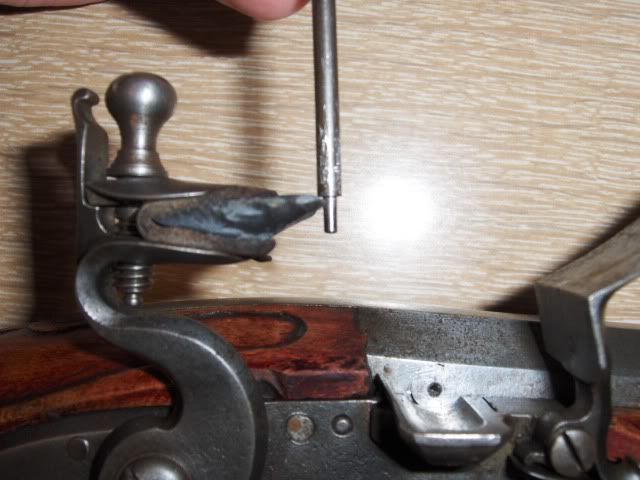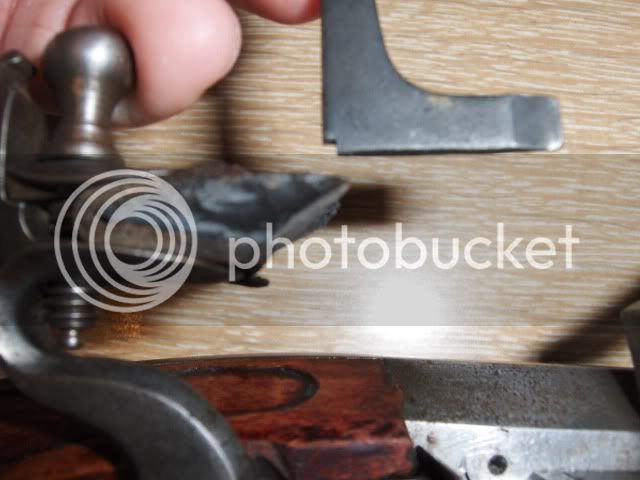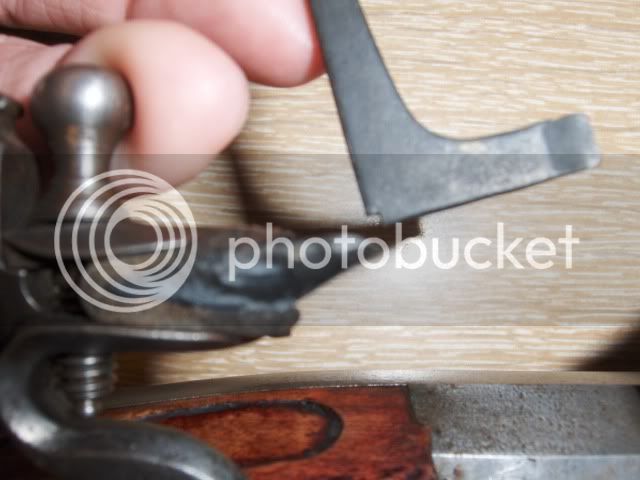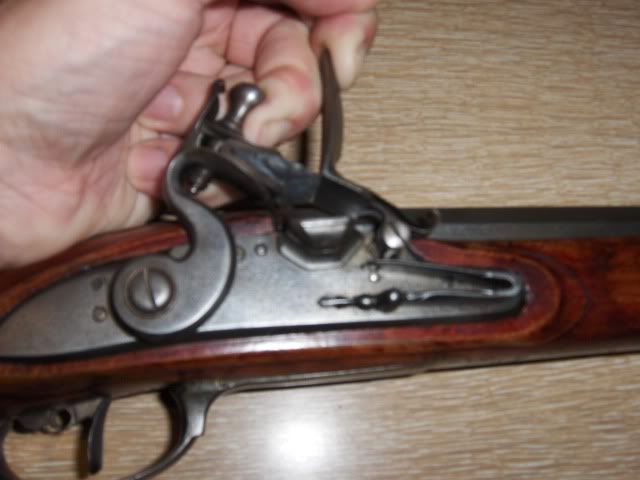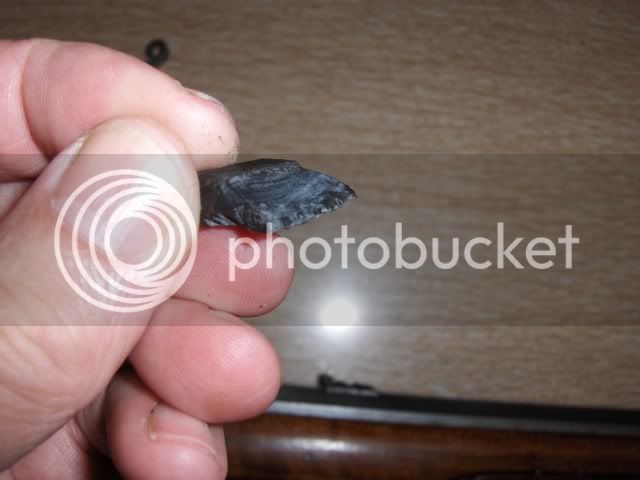Starman: YOu can knapp your flint in the Lock, by simply cradling the UNLOADED, UNPRIMED gun in your left arm, then use your Left Thumb's Inside edge next to the thumbnail, to hold the frizzen open just enough, that when you lower the cock, the edge of the flint will strike the Heel of the frizzen- The junction between the horizontal and Vertical parts of the frizzen( or where the Face that is struck to creat sparks meets the top of the frizzen that covers the pan.) Now, hole that frizzen open, making sure that NO Part of your thumb extends past the heel of the frizzen, cock the hammer back to "full-cock", and pull the trigger.
The flint will strike at a steep angle to the heel of the frizzen, and knock off a flake at a severe angle from the UNDERSIDE( bottom ) of the edge of the flint. That will give you a new, Sharp edge to cut steel. The edge will be sharp, and even- not jagged-- across the width of the face of the frizzen. That, in turn maximizes your opportunities to cut steel the next time you pull the trigger.
I do this every time I mount a new flint, and Every time I have to shift a flint forward in the jaws to get more use out of a worn down flint- about every 25 shots in my rifle. How fast the edge wears back(down) depends on the size of the lock, and the strength(weight) of the spring tension that throws the flint into the frizzen. The angle of Impact of any flint to the frizzen also controls how face a flint is destroyed. Optimum angle of Impact is 60-66 degrees. Otimum place of impact is 2/3 up from the bottom of the vertical face.
If the lock is designed properly, the flint will cut steel about 1/3 the length of the face, from 2/3 down to 1/3 at which point the frizzen will spring open, allowing the sparks created by the flint cutting steel, to be Thrown- not fall- down into the flash pan to ignite your priming powder. The timing of the lock to do these things makes the difference in how quickly you can get ignition of the main charge in the barrel, and the gun to fire, before your sights move off the target.
I have a "Knapping hammer" I made years ago, from a piece of 3/8 square brass stock, putting a shortened screw driver blade into the brass "Head" to use as both a cock screw turner, and a flint knapping hammer. I ate up a lot of expensive Flint edge with that tool, and found that using the method above removed less Flint, and gave me longer flint life.
I am not a fan of any tool that is going to make saw teeth out of the edge of a flint. :nono: :surrender: :thumbsup: It wastes good flint, weakens the edge, and gouges grooves in the face of the frizzen. This then requires more grinding filing and polishing the face to get it to spark worth the effort. :shocked2:

:thumbsup:






